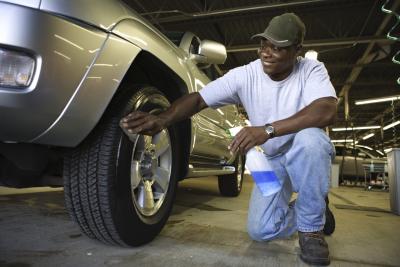Ball joints are a critical component to a car. They are the part of the vehicle's chassis that connect the steering knuckles to the control arms next to the wheels. The ball is attached to the steering knuckle and the socket in which the ball fits is on the control arm. Ball joints are used on all car and truck front ends, and vehicles with independent rear suspension have rear ball joints as well.

The ball joints must be able to support the entire weight of the vehicle's body. Some vehicles have four ball joints, two connecting each front wheel. In most cases, when there is an upper ball joint and a lower ball joint, but the weight of the vehicle lies entirely on the lower joint fitted with a spring. They are the load-carrying ball joints and therefore wear down the fastest. In cases where the spring is fitted on the upper ball joint, it is the load bearing joint and will wear down fastest. An exception where the ball joint is not the load-bearer is a MacPherson strut suspension. The strut bears the load in these cases, and the ball joint is secondary.

The ball joints rotate when the steering wheel is turned to move the vehicle's wheels to the left and right. The joints are the pivot points between the steering knuckle, which is connected to the wheel and the upper and lower control arms on the chassis. To keep the ball joints working successfully and to keep friction at a minimum, the joints should be greased on a regular basis, either annually or during routine oil changes.

Ball joints that are over-worn can be dangerous because if the joint fails, the driver will lose control of the vehicle's steering. When a joint wears down, the ball and socket no longer fit tightly together. Ball joints indicate their own wear in several ways: a knocking noise may be heard coming from the front end of the vehicle when driving over bumps or turning a sharp corner; tires may wear down in an uneven pattern and steering can even be erratic; some ball joints have a wear indicator pin (if the pin extends out the end of the joint over a certain length, the joint is too worn and should be replaced); mechanics and vehicle owners with knowledge of their cars can check the ball joint's grease fitting. If the grease fitting is loose and can be jiggled around by hand, the ball joint is worn.
A ball joint can last from 70,000 up to 150,000 miles, although it could last for more or less time. Rate of wear depends on road conditions, usage and the joint's exposure to dirt, water and road salt. If one joint is worn, the vehicle owner can either replace the single ball joint or replace all the ball joints, which may be more convenient in the long run.
